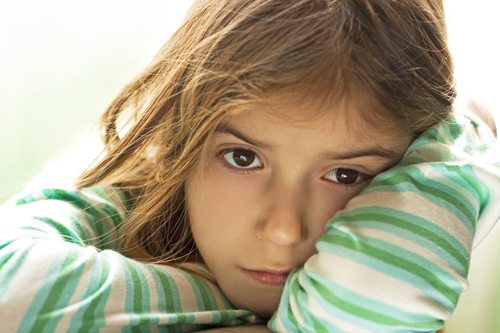5 Subtle Forms Of Child Abuse And What To Watch Out For
 Not knowing what really goes on in your co-parent’s home is one of the toughest aspects of divorce – especially if you’re concerned that your ex might be abusive. Child abuse is an equal opportunity offender, and occurs in every socioeconomic group. Let’s take a look at some statistics, and understand how to recognize the signs:
Not knowing what really goes on in your co-parent’s home is one of the toughest aspects of divorce – especially if you’re concerned that your ex might be abusive. Child abuse is an equal opportunity offender, and occurs in every socioeconomic group. Let’s take a look at some statistics, and understand how to recognize the signs:
In 2017, the Children’s Bureau published a 2015 report that showed an increase in abuse cases from 6.6 million to 7.2 million children. Of that number:
- 27% of victims were younger than 3 years
- 75% of victims were neglected
- 17% of victims were physically abused
- 8.4% of victims were sexually abused
- 6.9% of victims were psychologically abused
- More than 90% of juvenile sexual abuse survivors knew their perpetrator
- 1/3 – 2/3 of abused children had parents with a substance use disorder.
- Children whose parents abused alcohol or drugs were three times more likely to be abused and more than four times more likely to be neglected than children growing up in homes with non-substance abusing parents.
The report also determined the following consequences of child abuse:
- Abused children are 25% more likely to experience teen pregnancy
- About 30% of abused children will grow up to abuse their own children
- 80% of 21-year-olds who were abused as children met criteria for at least one psychological disorder.
- More than a third of children who experienced abuse developed a substance abuse disorder by the age of 18.
Not all abuse leaves a mark. There are no physical indications of emotional and verbal abuse, so a child is less likely to get help. Kids often don’t ask for help because they’re afraid of angering the abusive parent, who may have sworn them to secrecy.
So what do you do if you haven’t noticed any bruises, your kids deny they’re being hurt, yet your intuition tells you something’s wrong? Here are five subtler signs of abuse to watch for – and document – before you try to modify custody.
- Frequent school absences. Adults may keep children home due to bruises, broken bones, or other obvious signs of abuse.
- Reluctance to leave school or extracurricular activities. Abused children may be anxious about going home and prefer to remain at school or other activities because the environment is safer.
- Sleep and eating disturbances. Abused children may have nightmares in which they relive their trauma. Some children are afraid to go to sleep because they experience nightmares, or if they do fall asleep, they wake up and have difficulty falling back to sleep. Stress and cause some children to avoid eating, or overeat to numb their feelings.
- Regression. Children who are abused often regress to behavior associated with earlier developmental stages: thumb-sucking, bed-wetting, throwing tantrums. It’s thought that they remain “frozen” at the age the abuse occurred.
- Behavior changes. Abused children often become depressed, anxious, withdrawn, or more aggressive. They may also be inappropriately clingy with adults and peers, attempting to attach to and seek nurturance from a safe person.
How To Keep Your Children Safe
If you suspect your ex is abusing your children, it’s crucial to get them into therapy; the law mandates mental health professionals to report suspected child abuse. However, if you share joint custody, a therapist will not be able to see your child without both parents’ consent. In this case, you may need to go to court so that the judge will mandate therapy and order both parents to cooperate. If the therapist has reasonable cause to suspect abuse, she must notify the New Jersey Department of Children and Families. If the therapist believes your child is in immediate danger, she will call 911. A report of suspected and/or confirmed child abuse can be used to modify custody.
Therapy to Treat Traumatized Children
- Art and Play Therapy. These modalities help young children express feelings that they may be unable to express verbally. Techniques such as Sand Tray (a table of movable, miniature figures in sand), clay, and drawing can help kids process abuse and act out ways they could change the outcome, i.e., depicting an adult coming to a child’s aid.
- Trauma-focused Cognitive-Behavioral Therapy (CBT). This is an evidence-based treatment protocol for abused children. It’s designed to help them work through memories and the negative impact of traumatic experiences. This protocol requires parents’ involvement, both in session and at home. Even if your ex won’t cooperate, you can still implement the techniques — affect regulation (stabilizing mood shifts), relaxation, cognitive processing of trauma — in your own home.
- Dialectical Behavioral Therapy (DBT). This orientation requires more advanced cognitive functioning, so it’s generally used with adolescents. DBT often involves writing in session, somatic exercises (body work), and homework. It’s frequently done in a group setting. DBT trains teens to regulate their emotions and pause before acting so they consider the outcomes of their choices. It is most effective with those who have impulse control behaviors: self-injury, suicidal gestures or attempts, and eating disorders.
Early intervention helps traumatized children heal, and can minimize the impact of abuse-related psychological conditions such as PTSD, ADHD, anxiety, depression, and Conduct Disorder. To learn more about about the legal implications of child abuse, read our companion blog: Do You Suspect Child Abuse? What You Must Do in New Jersey.
Read More:
Child Abuse And Custody: Recognizing The Signs & Protecting Your Children


